Abstract
A good-behavior game was implemented in a fifth-grade reading class consisting of two groups of 14 students each. After the presentation of the game, reversal and component analysis phases were instituted. Game components included rules, lights (response feedback), and group consequences of extra recess and extra free time. Student observers recorded the dependent variables which included talking-out, disruptive, and out-of-seat behaviors. The results show that the game reduced the dependent measures from their baseline rate by almost 99% for one group and 97% for the other. The component analysis revealed that after association in the game, the stimulus components of rules and lights were effective in reducing the dependent behaviors.
Full text
PDF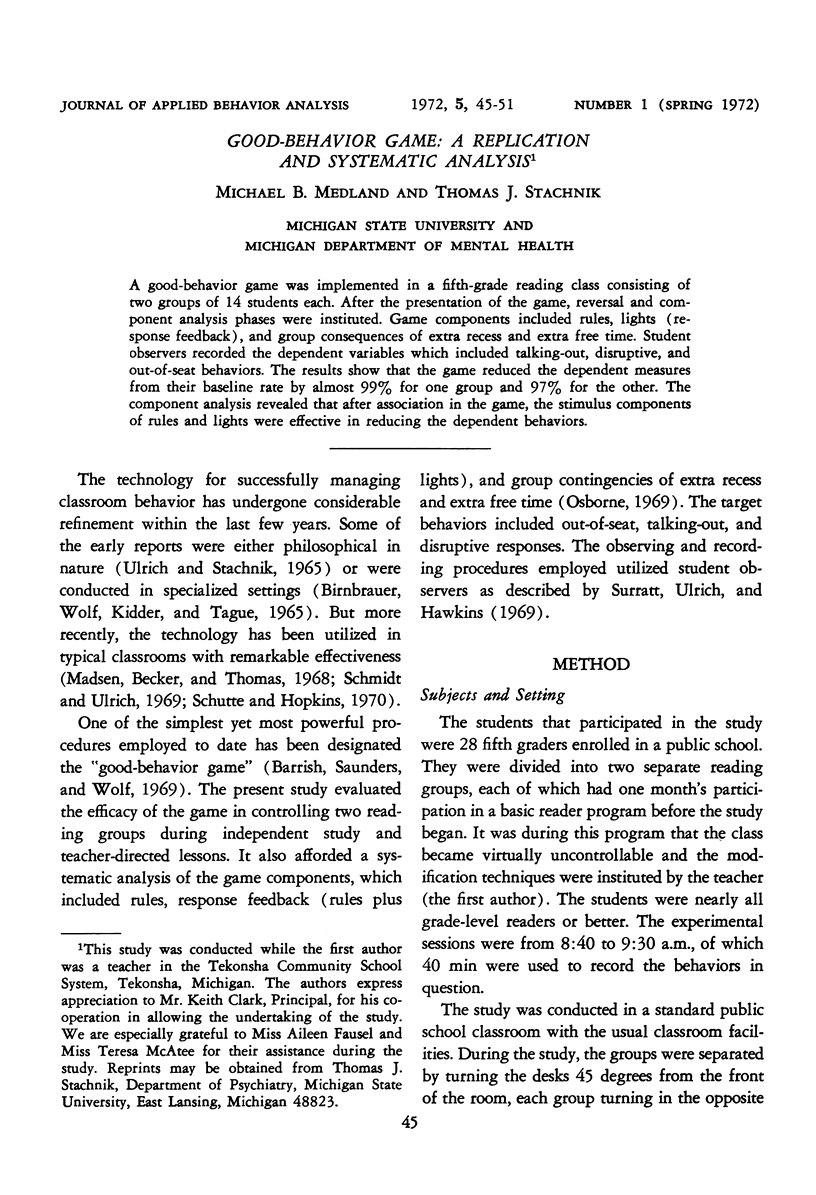
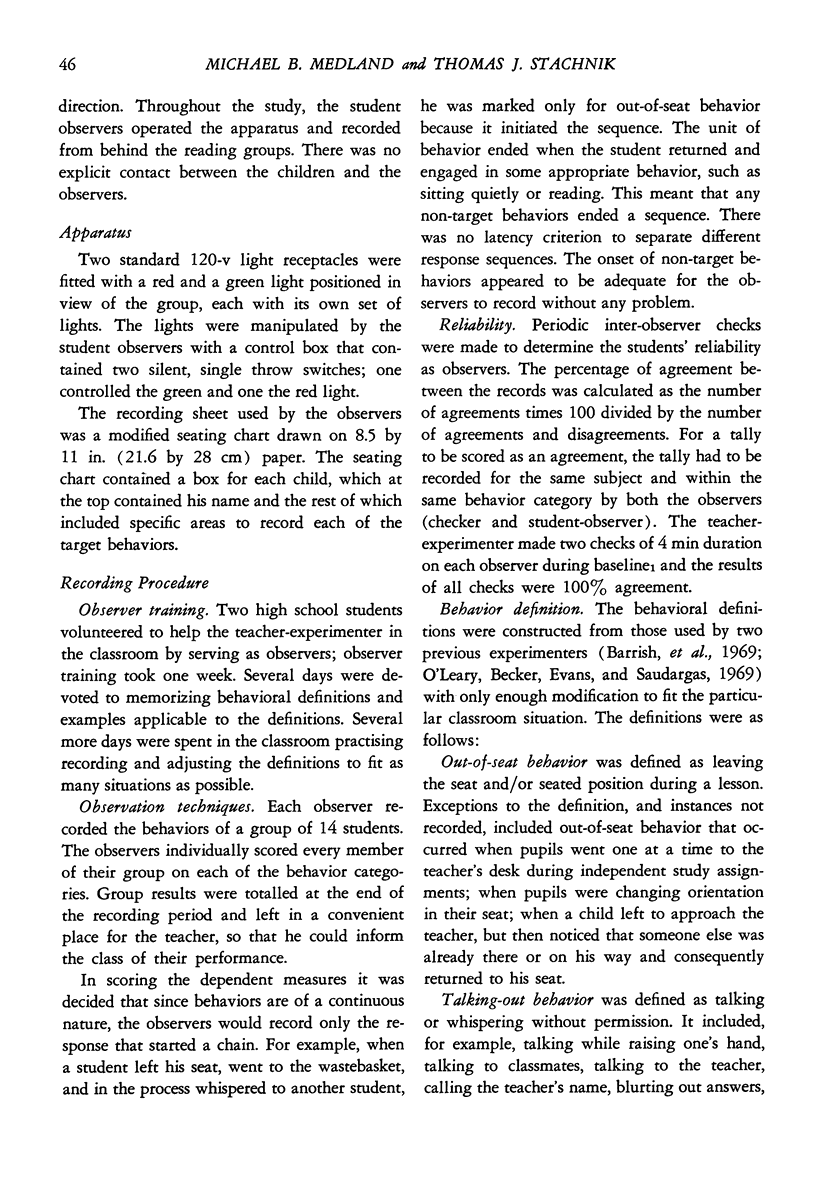
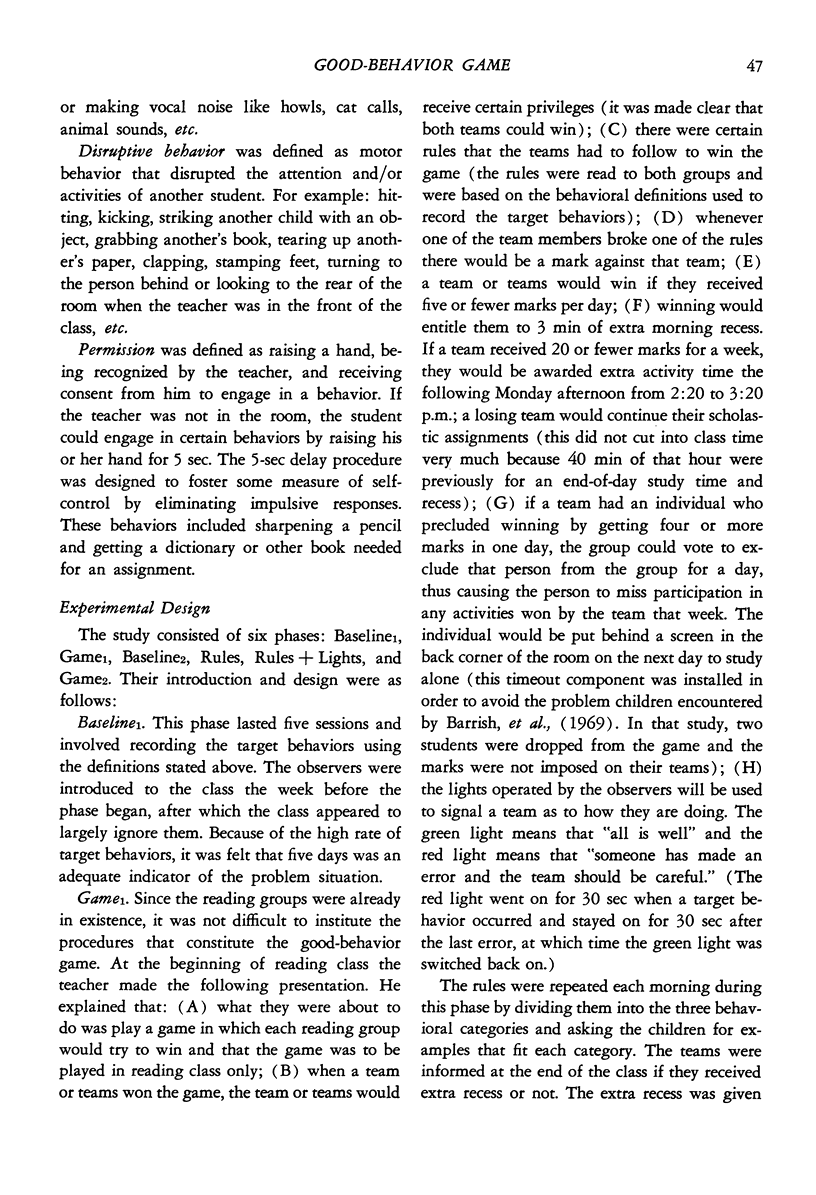
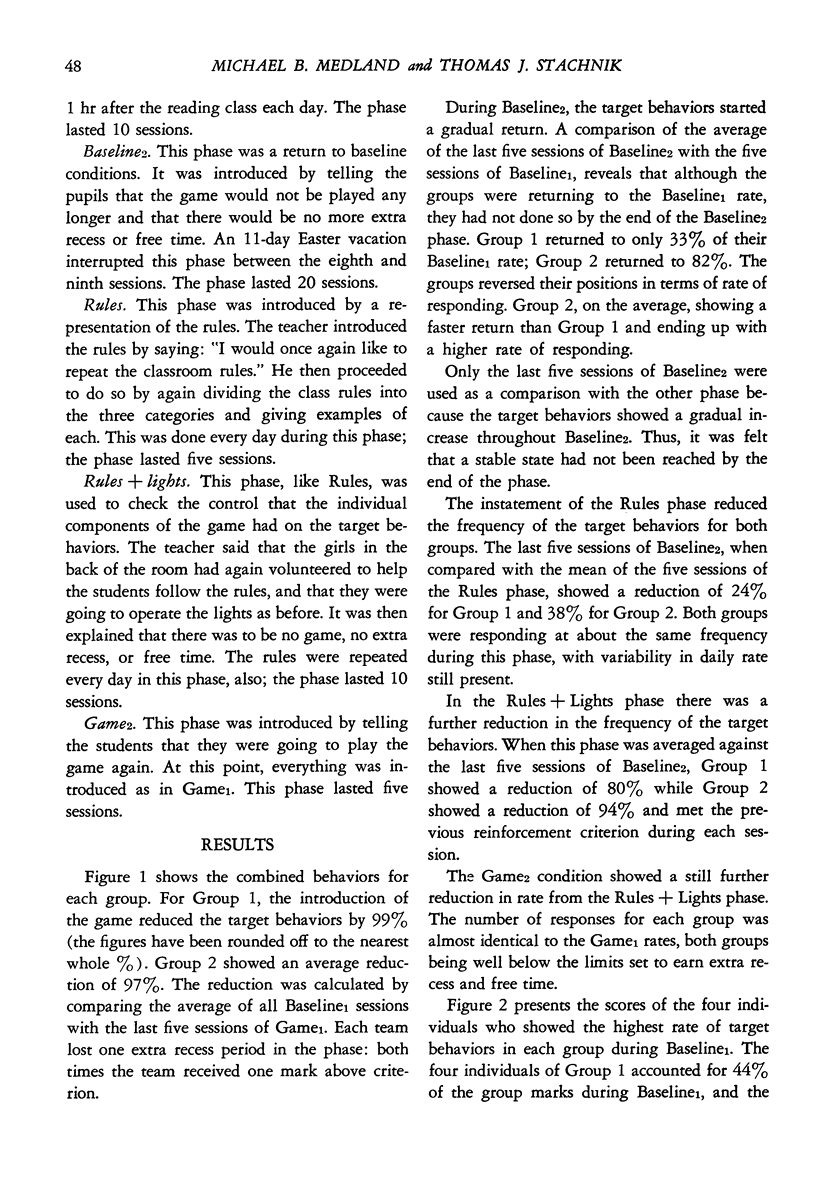

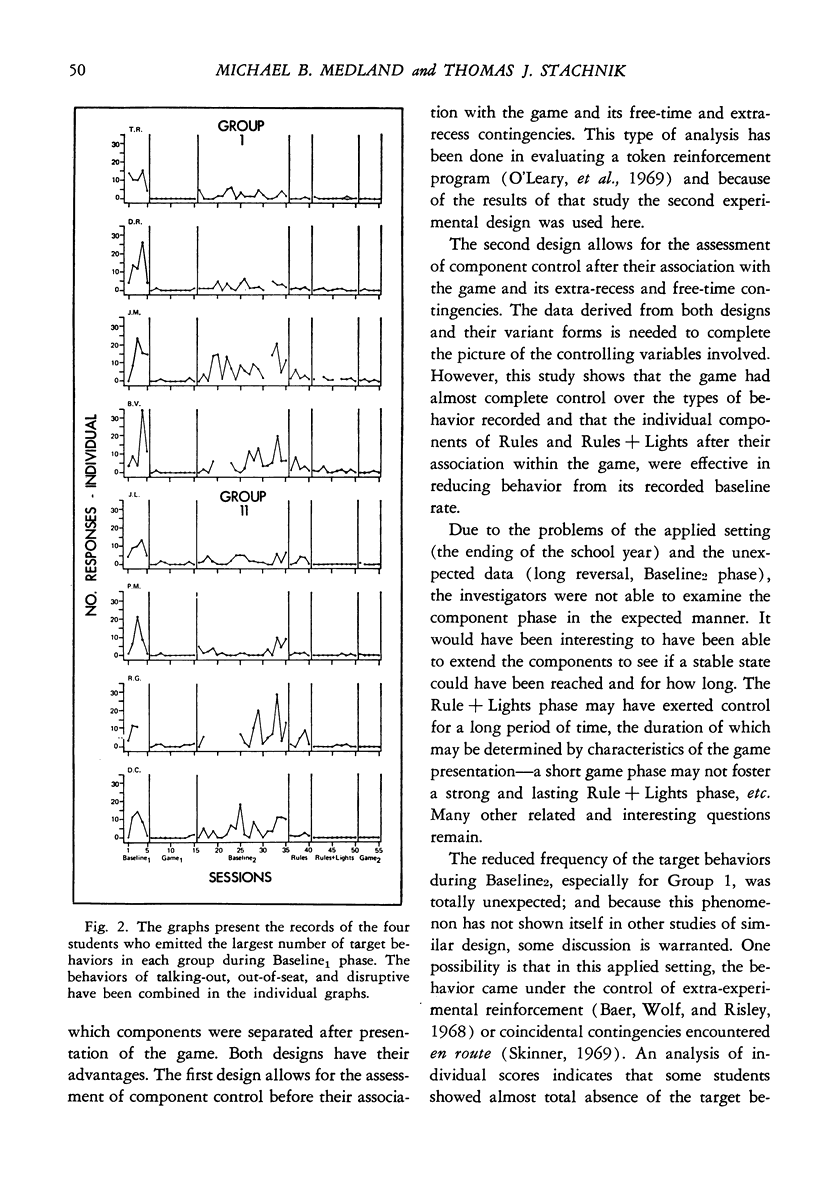

Selected References
These references are in PubMed. This may not be the complete list of references from this article.
- Baer D. M., Wolf M. M., Risley T. R. Some current dimensions of applied behavior analysis. J Appl Behav Anal. 1968 Spring;1(1):91–97. doi: 10.1901/jaba.1968.1-91. [DOI] [PMC free article] [PubMed] [Google Scholar]
- Barrish H. H., Saunders M., Wolf M. M. Good behavior game: effects of individual contingencies for group consequences on disruptive behavior in a classroom. J Appl Behav Anal. 1969 Summer;2(2):119–124. doi: 10.1901/jaba.1969.2-119. [DOI] [PMC free article] [PubMed] [Google Scholar]
- FINDLEY J. D. An experimental outline for building and exploring multi-operant behavior repertoires. J Exp Anal Behav. 1962 Jan;5(Suppl):113–166. doi: 10.1901/jeab.1962.5-s113. [DOI] [PMC free article] [PubMed] [Google Scholar]
- Madsen C. H., Becker W. C., Thomas D. R. Rules, praise, and ignoring: elements of elementary classroom control. J Appl Behav Anal. 1968 Summer;1(2):139–150. doi: 10.1901/jaba.1968.1-139. [DOI] [PMC free article] [PubMed] [Google Scholar]
- O'leary K. D., Becker W. C., Evans M. B., Saudargas R. A. A token reinforcement program in a public school: a replication and systematic analysis. J Appl Behav Anal. 1969 Spring;2(1):3–13. doi: 10.1901/jaba.1969.2-3. [DOI] [PMC free article] [PubMed] [Google Scholar]
- Osborne J. G. Free-time as a reinforcer in the management of classroom behavior. J Appl Behav Anal. 1969 Summer;2(2):113–118. doi: 10.1901/jaba.1969.2-113. [DOI] [PMC free article] [PubMed] [Google Scholar]
- Schmidt G. W., Ulrich R. E. Effects of group contingent events upon classroom noise. J Appl Behav Anal. 1969 Fall;2(3):171–179. doi: 10.1901/jaba.1969.2-171. [DOI] [PMC free article] [PubMed] [Google Scholar]
- Schutte R. C., Hopkins B. L. The effects of teacher attention on following instructions in a kindergarten class. J Appl Behav Anal. 1970 Summer;3(2):117–122. doi: 10.1901/jaba.1970.3-117. [DOI] [PMC free article] [PubMed] [Google Scholar]
- Surratt P. R., Ulrich R. E., Hawkins R. P. An elementary student as a behavioral engineer. J Appl Behav Anal. 1969 Summer;2(2):85–92. doi: 10.1901/jaba.1969.2-85. [DOI] [PMC free article] [PubMed] [Google Scholar]


